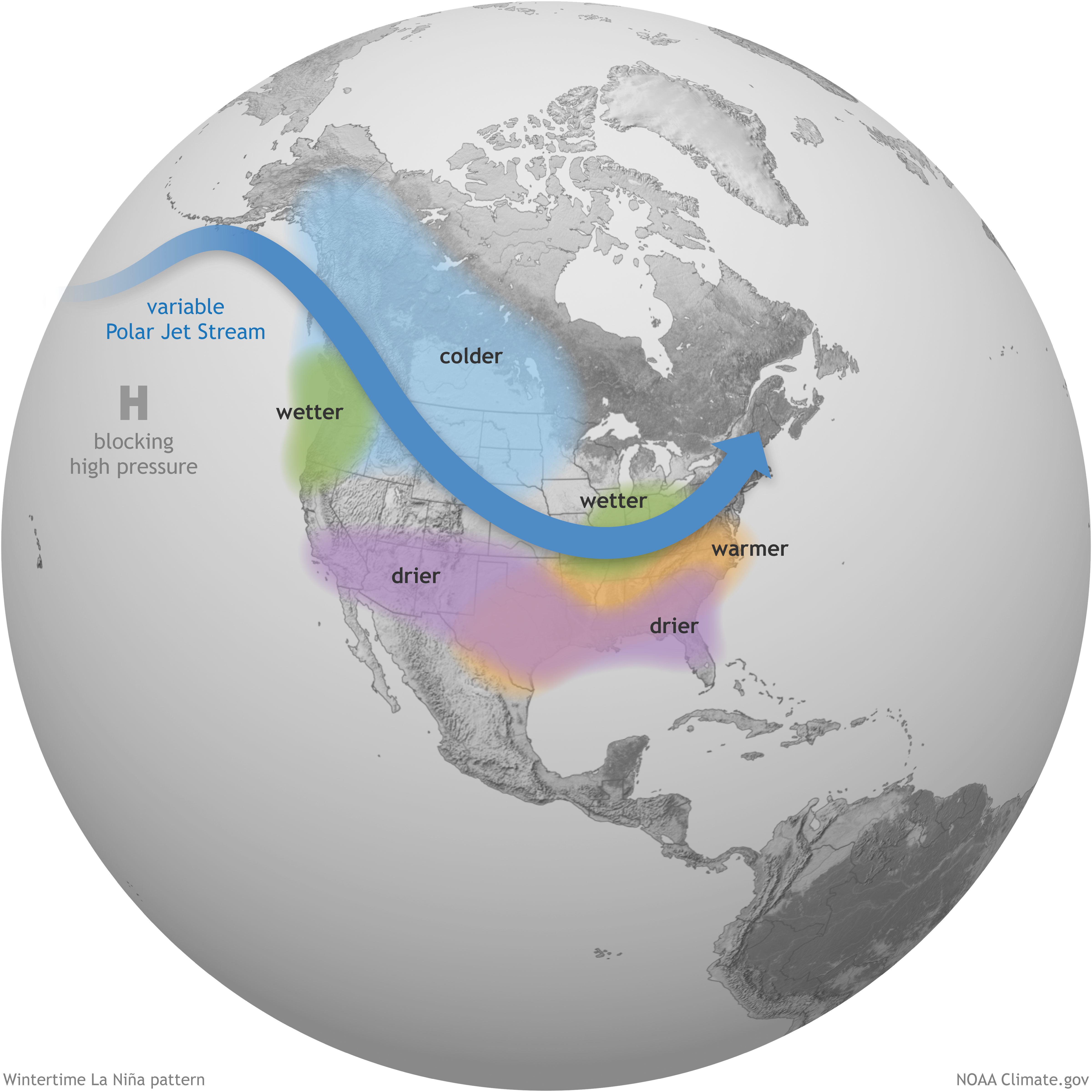**** Info via Environment Canada
Triple-Dip La Niña persists
According to the World Meteorological Organization (WMO), the unusually stubborn and lingering La Niña event is likely to last until the end of winter. The first “triple-dip“ La Niña (three consecutive years) of the 21st century will continue to affect temperature and precipitation patterns and intensify drought and flooding in different parts of the world.
The WMO El Niño/La Niña Update indicates about a 75% chance that La Niña will persist through December-February 2022/2023 and 60% chance that it will last through the January-March 2023 period.
Estimated probabilities for El Niño Southern Oscillation (ENSO). Source: World Meteorological Organization.
It is only the third time since 1950 that there has been a triple-dip La Niña. La Niña refers to the large-scale cooling of ocean surface temperatures in the central and eastern equatorial Pacific Ocean, combined with changes in the tropical atmospheric circulation, namely winds, pressure and rainfall. It usually has the opposite impact on weather and climate as El Niño, which is the warm phase of the so-called El Niño Southern Oscillation (ENSO). El Niño and La Niña are major drivers of the Earth’s climate system.
What does it mean for Canada?
In Canada, La Niña winters are often associated with above-average precipitation in British Columbia. Colder-than-normal temperatures can be expected in the Prairies, with some blasts of bitterly cold air in southern Prairies. We can expect above-average precipitation in Ontario and Quebec. La Niña usually does not have any impacts on Atlantic Canada.

Typical weather pattern shifts during a La Niña winter. Source: NOAA Climate.gov illustration.
La Niña is a natural phenomenon that usually cools the average global temperature. But it is taking place against a background of human-induced climate change, and increasing global temperatures, making our weather more extreme and affecting seasonal rainfall patterns. Despite La Niña, both 2022 and 2021 were warmer than any year before 2015.




